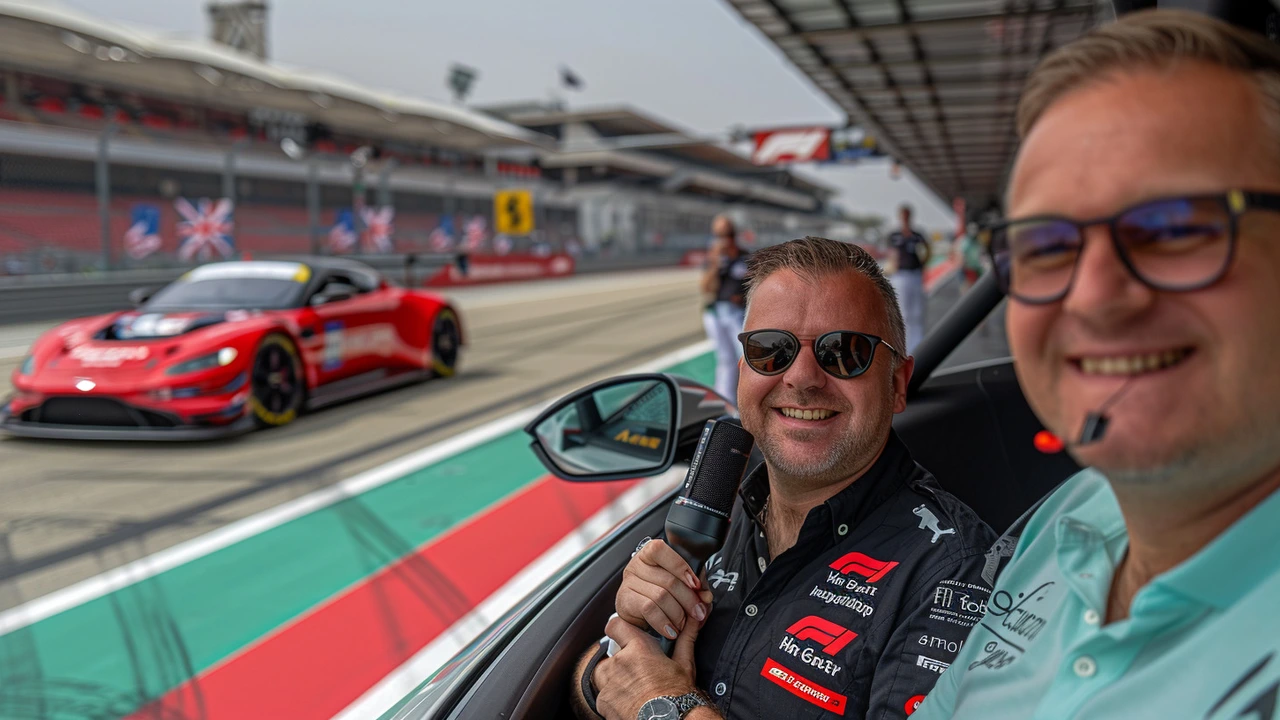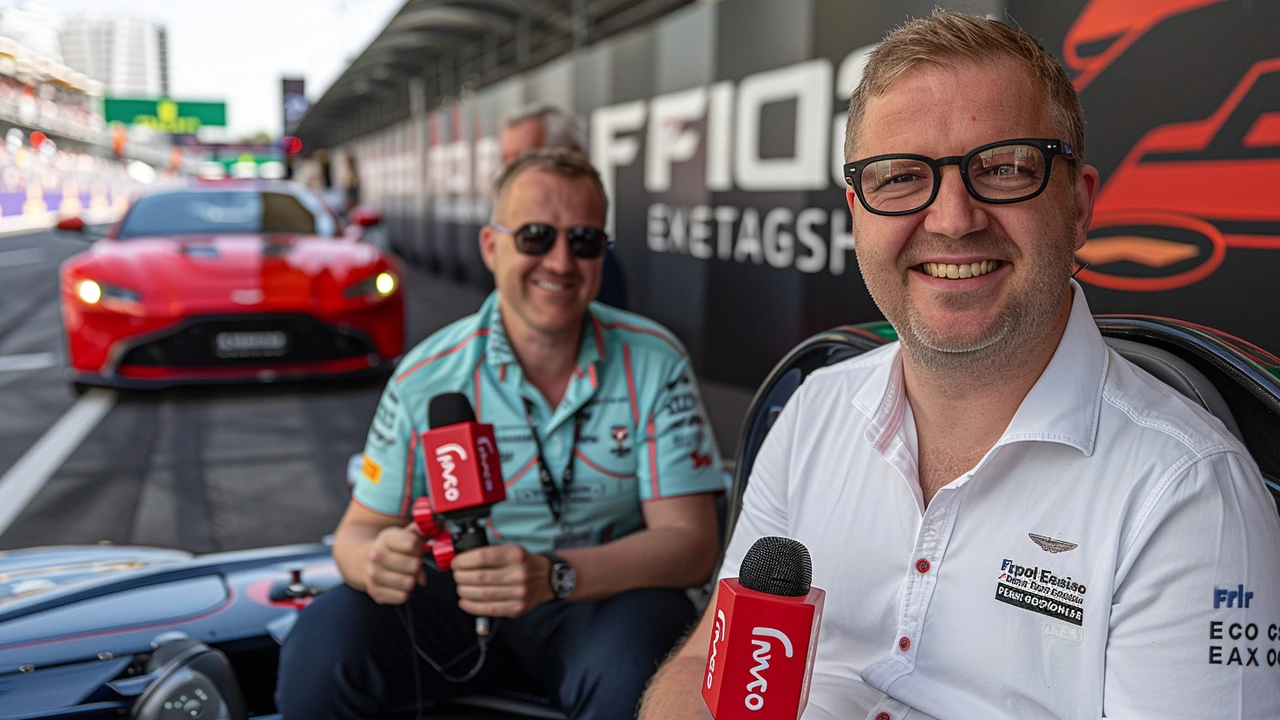The Crucial Role of the FIA Safety Car in Formula One
The Formula One Safety Car is an indispensable element in modern motorsports, tasked with maintaining safety during races, particularly in adverse conditions or following incidents on the track. The presence of the Safety Car helps protect drivers, marshals, and spectators from potential incidents, maintaining calm and order until race conditions are safe to resume. Typically, the Safety Car is deployed in situations such as heavy rainfall, on-track accidents, or when debris litters the circuit, making it dangerous for the high-speed machines to continue as usual.
Christian Hewgill and Katie Osborne, in their informative F1 Explains series, have taken on the mission to dive deep into the workings and importance of the Safety Car. The in-depth series explores every facet of the Safety Car's operation, its deployment, and the strategies orchestrated by teams in response to its presence. Their analysis helps viewers understand the meticulous procedures followed during a Safety Car period, including the impact on race strategy and how drivers and teams must adapt their tactics instantaneously.
Bernd Maylander and the Responsibilities of the Safety Car Driver
At the heart of the Safety Car operation is Bernd Maylander, a man whose name has become synonymous with the FIA Safety Car. With years of experience, Maylander has the daunting responsibility of driving the Safety Car, a role that demands climactic precision and unwavering focus. His primary duty is to lead the pack of racing cars safely, ensuring that the race circuit is clear and secure. During a Safety Car period, his driving skill ensures that the pace remains controlled while allowing marshals to address and clean any issue that prompted the deployment.
Maylander’s vehicles of choice are the AMG-Mercedes and Aston Martin, each meticulously modified to handle the intense demands of leading a Formula One pack. These high-performance vehicles are not just any typical car seen on city streets. They possess advanced modifications enabling them to maintain a speed that keeps the race cars’ tires and brakes warm while ensuring safe conditions. The vehicles are equipped with sophisticated onboard technology systems, allowing Maylander and his co-driver to communicate seamlessly with the race control and orchestrate responses to dynamic track conditions.
Understanding the Sophisticated Onboard Technology
One of the intriguing aspects of the Safety Car is its onboard technology, a crucial component in ensuring safe and efficient race management. This technology assists Maylander in navigating the track and maintaining communication with race control. In this segment of F1 Explains, Christian Hewgill steps into the driver’s seat to provide a hands-on demonstration of the Safety Car's embedded systems. From advanced telemetry systems to communication devices and monitoring equipment, Hewgill offers insight into how these tools facilitate seamless operation during tense race conditions.
The telemetry systems play a pivotal role, providing real-time data about the car’s performance and the state of the track. This data is crucial for making split-second decisions, whether it be adjusting speed to suit track conditions or coordinating with race officials for race resumption. Communication is another vital aspect, as the onboard systems allow direct contact with the race director, ensuring synchronized actions tailored to race needs.
Impact on Race Strategy and Tactics
The deployment of the Safety Car invariably brings a strategic element to the race. Teams and drivers must swiftly adapt their strategies, creating opportunities for some while posing challenges to others. During a Safety Car period, drivers often dive into the pits for tire changes or refueling, operations that are orchestrated with precision to gain the maximum advantage. Moreover, the reduced speed under the Safety Car can help drivers save fuel and manage tire wear, setting the stage for a more aggressive approach once the race resumes.
Teams work tirelessly in the background, analyzing data and making rapid decisions that could alter the race's outcome. Pit crews are on high alert, ready to perform flawless pit stops that can make or break a driver’s race. Strategies that hinge on precise timing, such as the undercut or overcut, are reevaluated and recalibrated in response to the Safety Car. The period when the Safety Car is on track is a frenzy of activity, with every team member playing their part to ensure their driver stands the best chance once the green flag waves again.
The Human Element: Bernd Maylander’s Perspective
Aside from the technicalities and strategic elements, the role of Bernd Maylander brings a human narrative to the Safety Car operation. Maylander’s extensive background in racing equips him with the necessary skills to handle the tremendous pressure associated with his role. His understanding of vehicle dynamics, race conditions, and safety protocols enables him to maintain a controlled pace that balances the needs of both safety and racing excitement.
Maylander’s insights into his role reveal the dedication and passion required to excel as a Safety Car driver. He underscores the importance of mental acuity and physical fitness, qualities that are essential in withstanding the rigors of leading a pack of the world’s fastest cars. His reflections offer a peek into the discipline and commitment behind the scenes, elements that are vital for maintaining the sport’s integrity and safety standards.

Conclusion
The Formula One Safety Car, helmed by Bernd Maylander, is a keystone of F1 race management, safeguarding the welfare of all those involved in the thrilling world of motorsports. Through the F1 Explains series by Christian Hewgill and Katie Osborne, fans gain a deeper appreciation of the intricate procedures and robust systems underpinning its operation. This exploration not only illuminates the technical brilliance behind the Safety Car but also highlights the meticulous preparations and split-second decisions defining Formula One as the pinnacle of racing excellence. The insights provided by Maylander and demonstrated by Hewgill ensure that the importance of the Safety Car in maintaining safety and excitement in Formula One is both comprehended and revered.


Chris Snyder
Great breakdown of the Safety Car’s role-really helps fans get why it’s more than just a pace‑setter :) The way Bernd Maylander balances speed and safety is impressive, and the telemetry details make the whole process feel transparent. It’s also cool to see how teams tweak pit strategies during those periods, turning a neutral moment into a tactical playground. Thanks for the deep dive!